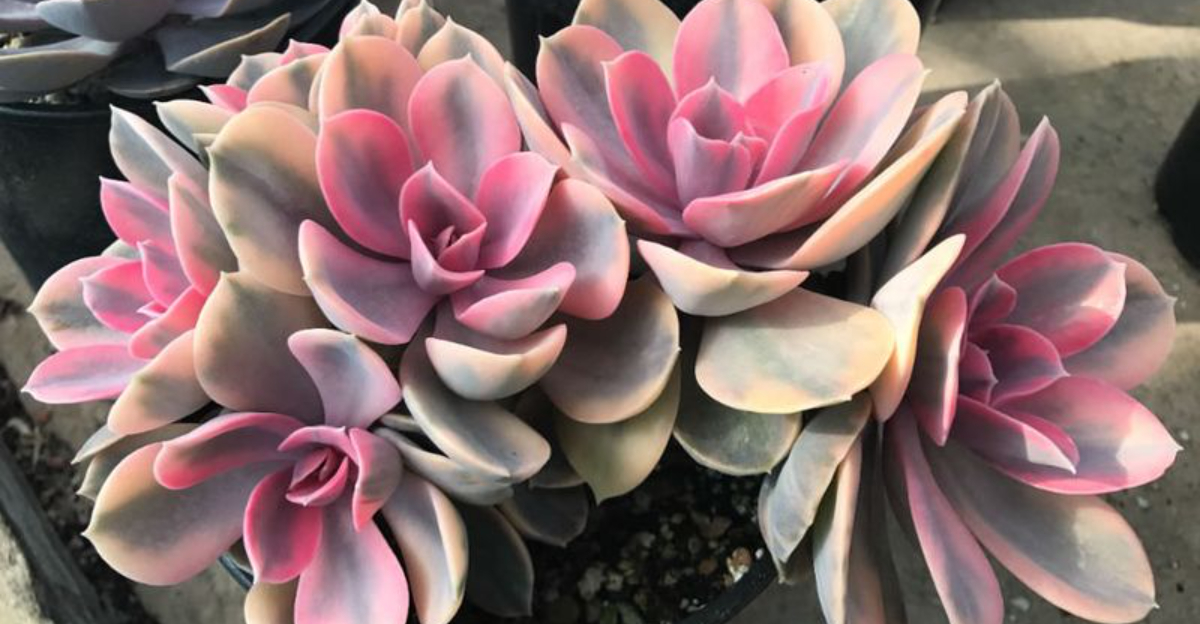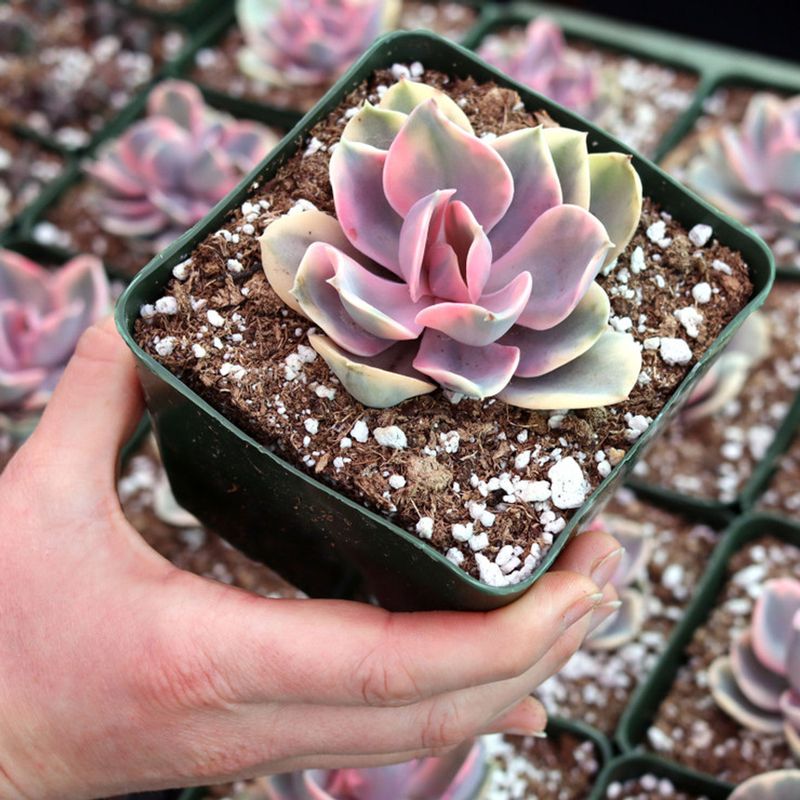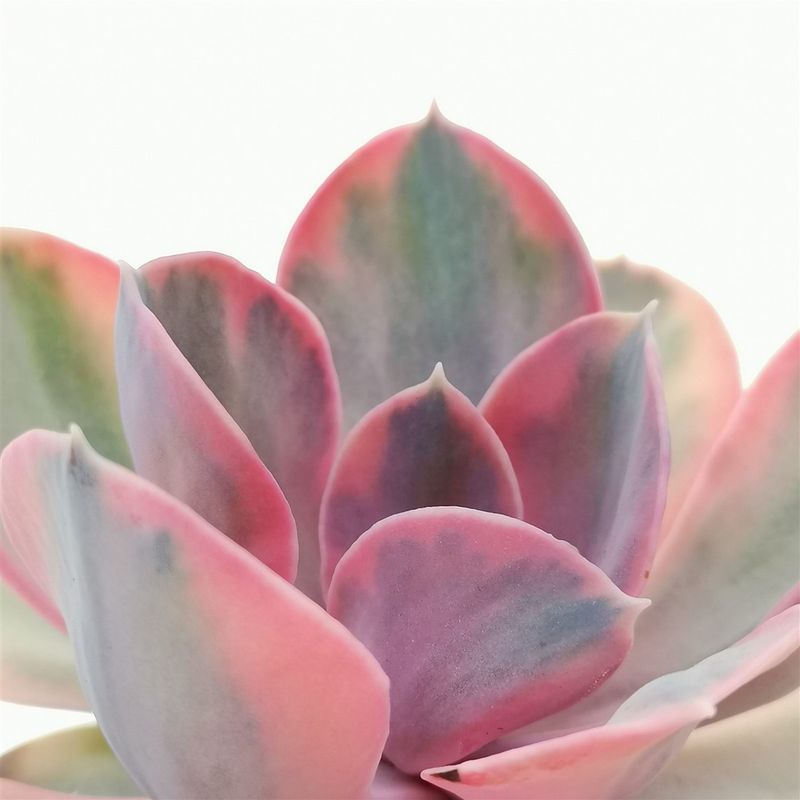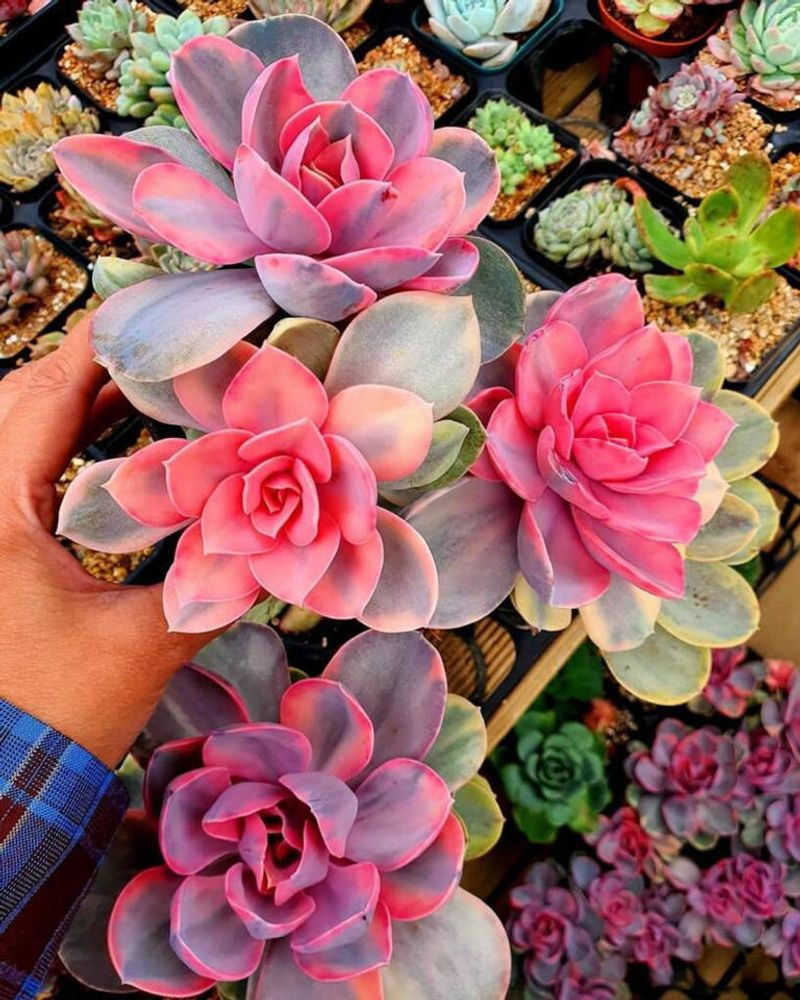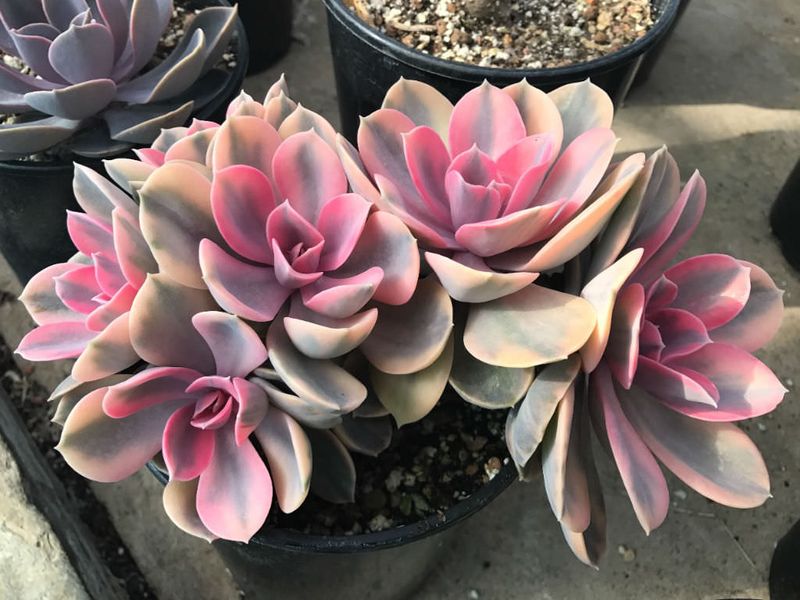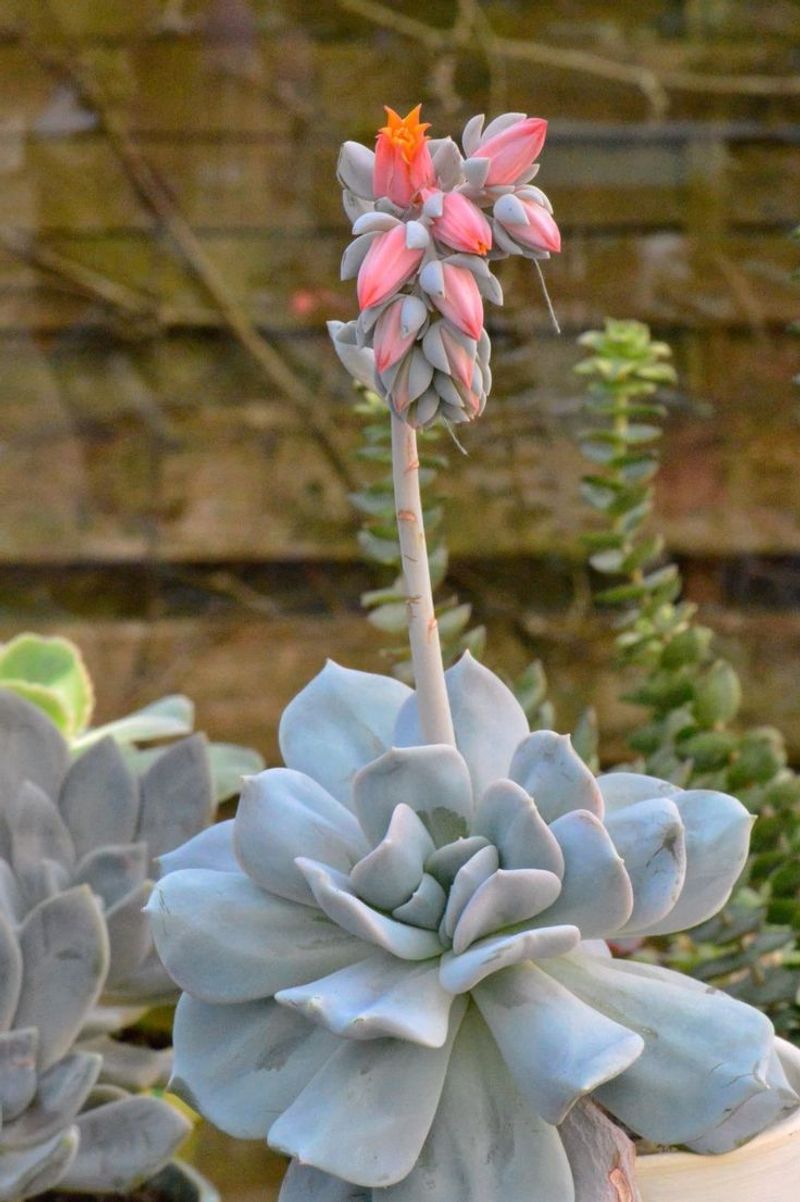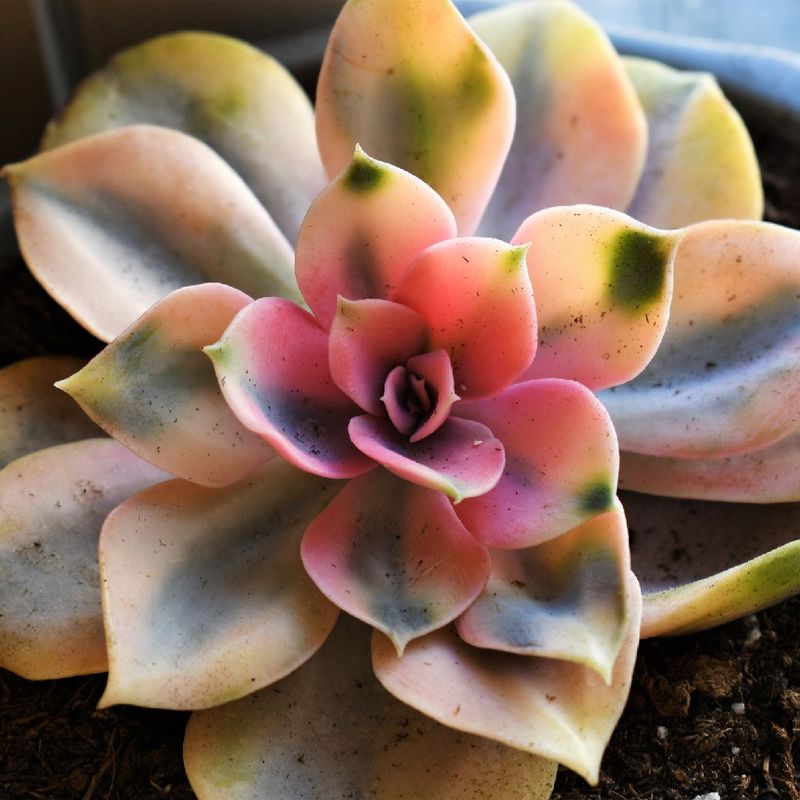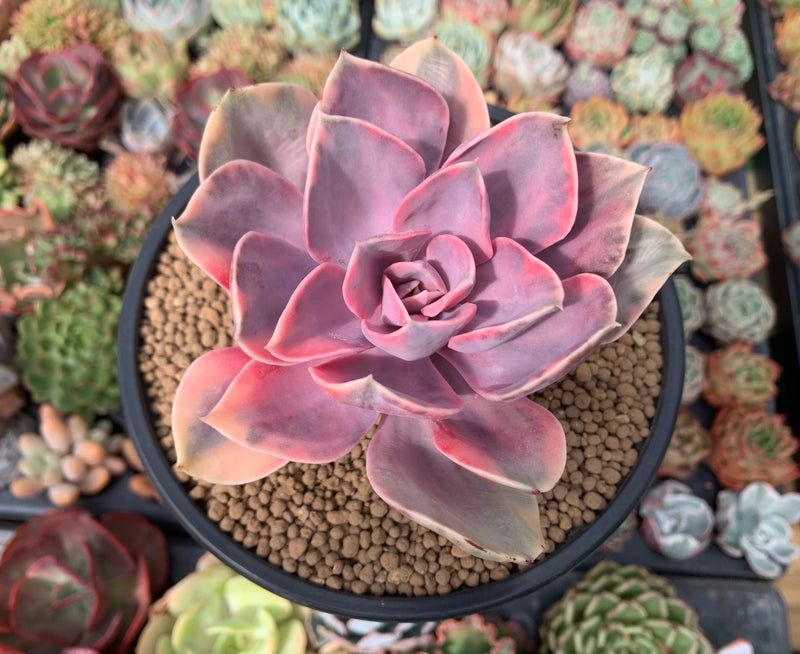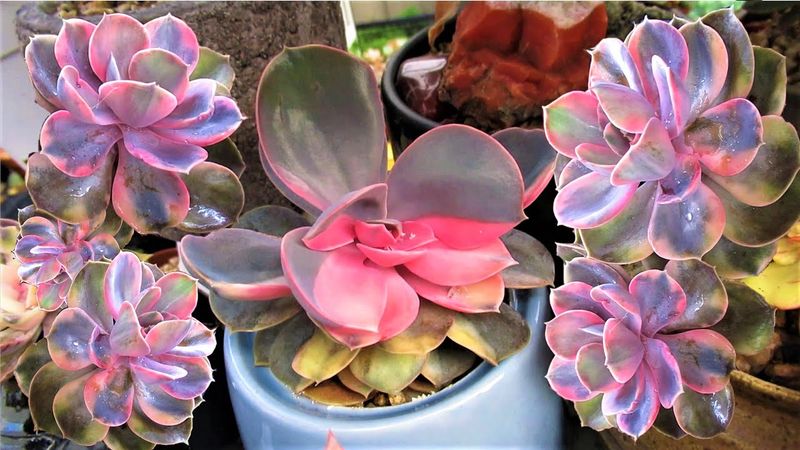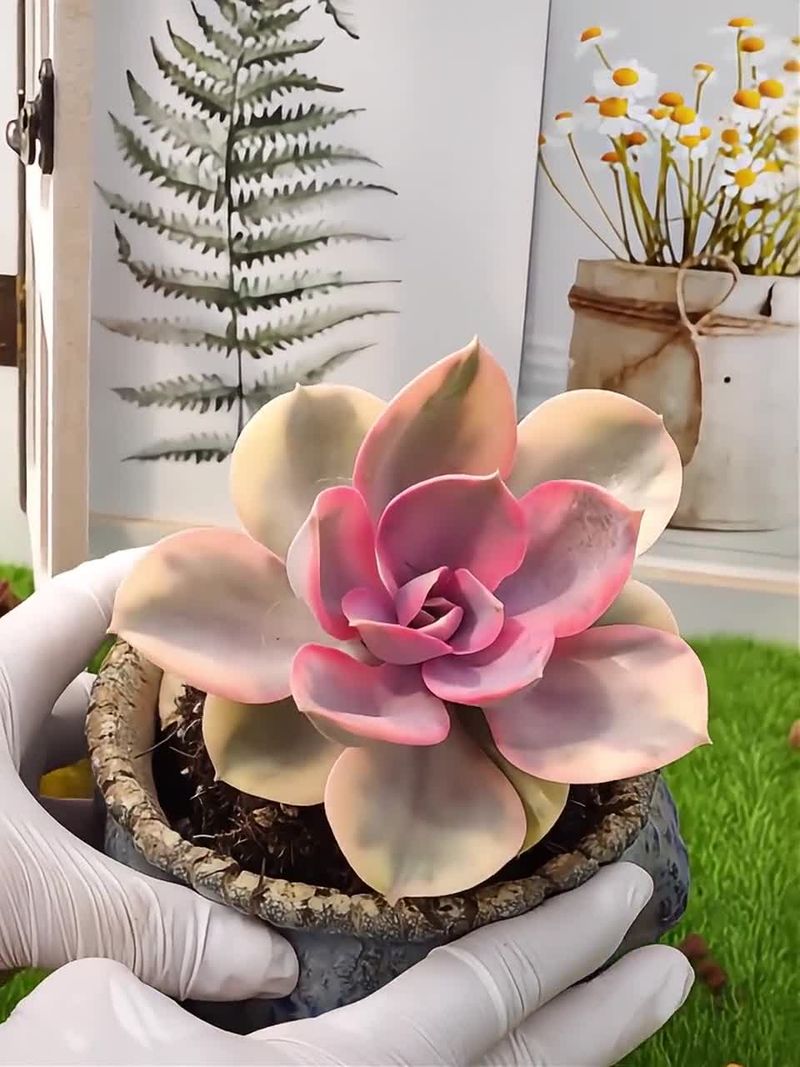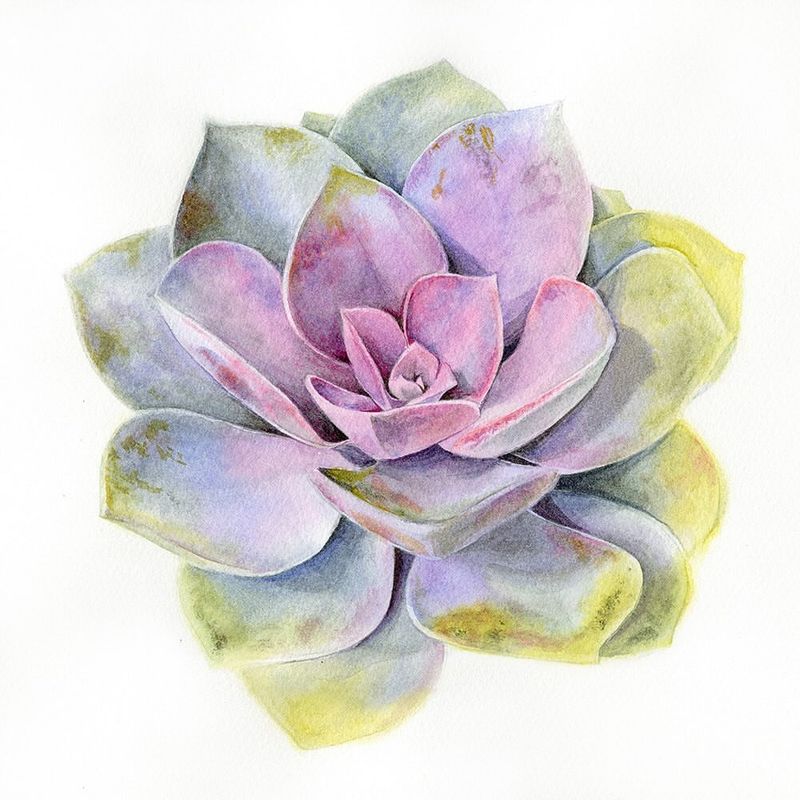Echeveria ‘Rainbow’ is a stunning succulent, renowned for its kaleidoscope of colors and adaptability. This unique plant, a variegated form of Echeveria ‘Perle von Nurnberg’, offers a spectacular display of hues that change with the seasons.
From pastel pinks and purples to vibrant greens and blues, this succulent is a true chameleon in the plant world. Whether you’re an experienced gardener or a succulent novice, these ten tips will help you understand and care for this botanical marvel.
Let’s explore the vibrant world of Echeveria ‘Rainbow’ and uncover its secrets.
1. Botanical Classification
The Echeveria ‘Rainbow’ stands out in the botanical world due to its unique lineage. As a variegated form of Echeveria ‘Perle von Nurnberg’, it belongs to the Crassulaceae family.
This succulent is adored for its rosette-shaped leaves, which display a stunning array of pastel tones. The leaves often feature a blend of pink, purple, yellow, green, and blue, edged with deeper hues for contrast.
Botanically classified under the genus Echeveria, the ‘Rainbow’ cultivar is a testament to the beauty and diversity found within the succulent family.
2. Appearance
Echeveria ‘Rainbow’ is a visual masterpiece, enchanting plant lovers with its rosette-shaped, fleshy leaves. The leaves are adorned in a mesmerizing palette of pastel tones—pink, purple, yellow, green, and blue.
These colors shift and change, creating a dynamic display that captivates the eye. Hints of deeper hues along the edges add contrast and depth. It’s like a living watercolor, each leaf a brushstroke of nature’s artistry.
This succulent’s beauty isn’t just skin deep; it’s a reflection of the diverse and changing environments it thrives in.
3. Color-Changing Feature
One of the most fascinating features of Echeveria ‘Rainbow’ is its ability to change colors. Depending on the season, sunlight, temperature, and watering schedule, its hues can shift dramatically.
Cooler temperatures or full sun can intensify pinks and purples, while shade or more water softens the tones to greener shades. This chameleon-like behavior makes it a favorite among gardeners who appreciate a plant that adapts and transforms.
Watching this succulent change is like witnessing a seasonal spectacle, where each phase is a new chapter in its colorful story.
4. Growth Habit
Echeveria ‘Rainbow’ boasts a compact and low-growing habit, making it perfect for small spaces or container gardening. This succulent has the charming ability to produce offsets, lovingly known as “pups,” around its base.
These pups can be separated and replanted, giving you more of these delightful plants to enjoy or share. Its growth pattern is orderly and pleasing, with each rosette adding to the lushness of the display.
Whether in a pot or a rock garden, Echeveria ‘Rainbow’ brings a touch of elegance and charm to any setting.
5. Blooming
In the spring or summer, Echeveria ‘Rainbow’ surprises with its beautiful blooms. Tall stems rise from the rosettes, adorned with bell-shaped flowers in shades of pink and orange.
These blossoms add an unexpected flair to the plant’s already stunning appearance. The flowers not only enhance its visual appeal but also attract pollinators, making your garden a lively place.
The blooming period is a celebration of color and life, as the vibrant flowers dance in the breeze. This spectacle transforms any garden into a vibrant tapestry of hues.
6. Care Requirements
Caring for Echeveria ‘Rainbow’ is a rewarding experience, as long as its basic needs are met. It thrives in full sun to partial shade, requiring well-draining soil like a cactus or succulent mix.
Watering should be done deeply but infrequently, allowing the soil to dry out completely between waterings. This succulent prefers a balance of light and moisture to maintain its vibrant colors and healthy growth.
With a little attention and care, Echeveria ‘Rainbow’ will flourish, bringing joy and color to your garden or indoor space.
7. Cold Sensitivity
Echeveria ‘Rainbow’ is not frost-tolerant and requires protection in temperatures below approximately 40°F (5°C). For those in colder climates, it’s best grown indoors or in a greenhouse where the environment can be controlled.
This succulent appreciates warmth and can be a delightful indoor companion during the colder months. Its sensitivity to cold doesn’t diminish its charm; instead, it offers an opportunity to bring a touch of the garden inside.
Shielding it from frost ensures it continues to thrive and display its beautiful colors.
8. Propagation
Propagating Echeveria ‘Rainbow’ is a fascinating and accessible process. It can be easily propagated from leaf cuttings, offsets, or stem cuttings. Each method offers a different experience, allowing plant enthusiasts to experiment and expand their collection.
Leaf cuttings are particularly popular, as they root readily and grow into new plants. This propagation not only expands your garden but also provides an opportunity to share this unique succulent with friends.
With patience and a little practice, you’ll find this process both rewarding and enjoyable.
9. Common Uses
Echeveria ‘Rainbow’ is a versatile plant that fits beautifully in various settings. Its splendid colors and compact size make it perfect for decorative pots, succulent arrangements, or rock gardens.
Indoors, it adds a splash of color to any room, while outside, it complements other succulents and cacti. Its adaptability and striking appearance make it a favorite among plant enthusiasts and landscapers alike.
Whether as a standalone piece or part of a larger arrangement, Echeveria ‘Rainbow’ brings a touch of elegance and vibrancy to any space.
10. Fun Fact
Did you know? Echeveria ‘Rainbow’ is sometimes referred to as a “living watercolor.” This nickname reflects its constantly changing hues, which seem to blend seamlessly like a painted masterpiece.
This fun fact adds a layer of intrigue to its already enchanting presence. As you watch this succulent evolve through the seasons, you’ll see why it’s earned this artistic moniker.
Each color shift is a stroke of nature’s brush, making Echeveria ‘Rainbow’ not just a plant, but a piece of living art within your garden or home.
